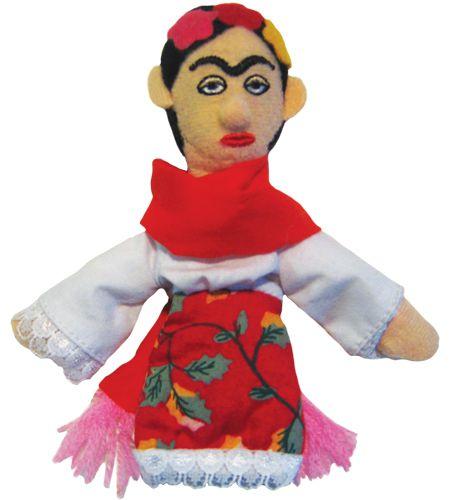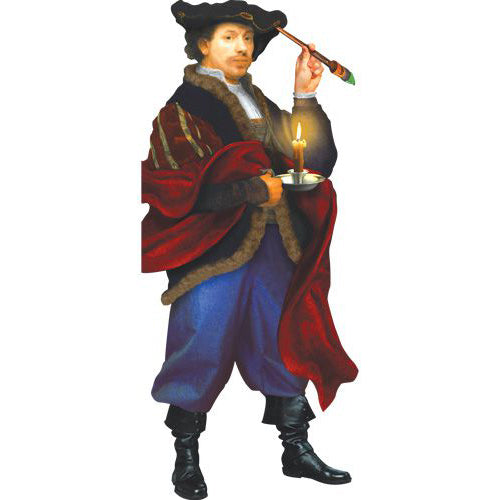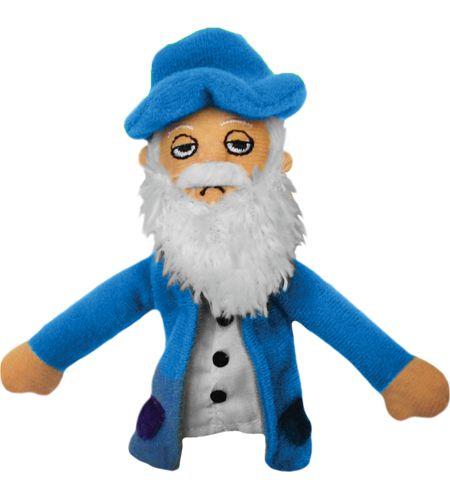Títere de dedo magnético de Georgia O'Keeffe
Títere de dedo magnético de Georgia O'Keeffe
The Unemployed Philosopher's Guild
En existencias
No se pudo cargar la disponibilidad de retiro
- Recomendado a partir de 5 años debido a las piezas pequeñas.
- Tarjeta de información incluida
Product Details
Product Details
- Product type: Finger Puppet
- Shipping Weight: 0.19 lb (3.0 oz; 85 g)
- SKU: SKU: SKU010002646
- UPC: 814229005049
In these collections: El gremio de filósofos desempleados, Finger Puppets, Georgia O´Keeffe, Gifts Under $10, Juguetes, Todos los productos, Women's History Month, and divertido y creativo.
Share



About the Artist
Georgia O'Keeffe
Georgia O'Keeffe (1887-1986), an iconic American artist, is renowned for her groundbreaking contributions to modern art and her distinctive depictions of nature and landscapes. Born on November 15, 1887, in Sun Prairie, Wisconsin, O'Keeffe displayed a remarkable talent for art from an early age. She embarked on a transformative artistic journey, becoming a pioneer of American modernism and an influential figure in the art world.
O'Keeffe's artistic vision was characterized by her bold use of color, precise attention to detail, and a unique ability to capture the essence of her subjects. Her notable works often featured enlarged flowers, New Mexico landscapes, and architectural abstractions.
More Georgia O'Keeffe
-
Georgia O'Keeffe "Red Canna" Slim Wallet
Precio habitual £9.84 GBPPrecio habitualPrecio unitario / por -
Billetera Blindada: Perros y Perritos
Precio habitual £12.12 GBPPrecio habitualPrecio unitario / por -
Plato Georgia O'Keeffe
Precio habitual £22.80 GBPPrecio habitualPrecio unitario / por -
Adorno de Vidrio Soplado: Las Dos Fridas
Precio habitual £15.16 GBPPrecio habitualPrecio unitario / por -
Georgia O'Keeffe "Petunia" Zip Wallet
Precio habitual £20.48 GBPPrecio habitualPrecio unitario / por -
Georgia O'Keeffe "Petunia" Vegan Leather Wristlet
Precio habitual £18.96 GBPPrecio habitualPrecio unitario / por -
Georgia O'Keeffe "Red Canna" Zip Wallet
Precio habitual £20.48 GBPPrecio habitualPrecio unitario / por -
Georgia O'Keeffe "Petunia" Slim Wallet
Precio habitual £9.84 GBPPrecio habitualPrecio unitario / por -
Silver Muse Cuff: Georgia O'Keeffe
Precio habitual £11.40 GBPPrecio habitualPrecio unitario / por -
Georgia O'Keeffe: My New Yorks
Precio habitual £38.00 GBPPrecio habitualPrecio unitario / por

About the Brand
The Unemployed Philosopher's Guild
The origins of the Unemployed Philosophers Guild are shrouded in mystery. Some accounts trace the Guild's birth to Athens in the latter half of the 4th century BCE. Allegedly, several lesser philosophers grew weary of the endless Socratic dialogue endemic in their trade and turned to crafting household implements and playthings. (Hence the assertions that Socrates quaffed his hemlock poison from a Guild-designed chalice, though vigorous debate surrounds the question of whether it was a "disappearing" chalice.)
Others argue that the UPG dates from the High Middle Ages, when the Philosophers Guild entered the world of commerce by selling bawdy pamphlets to pilgrims facing long lines for the restroom. Business boomed until 1211 when Pope Innocent III condemned the publications. Not surprisingly, this led to increased sales, even as half our membership was burned at the stake.
More recently, revisionist historians have pinpointed the birth of the Guild to the time it was still cool to live in New York City's Lower East Side. Two brothers turned their inner creativity and love of paying rent towards fulfilling the people's needs for finger puppets, warm slippers, coffee cups, and cracking up at stuff.
Most of the proceeds go to unemployed philosophers (and their associates). A portion also goes to some groups working on profound causes.
-
Museum Store Association Member
The Museum Store Association supports the cultural non-profit retail industry and the people who work in it.
-
Supports Non-profit Organizations
A portion of proceeds is donated to non-profit organizations. See description for details.
-
Designed in USA
Designed in the USA, with global manufacturing or assembly.
More from The Unemployed Philosopher's Guild
-
Marioneta de dedo magnética de Bob Ross
Precio habitual £6.80 GBPPrecio habitualPrecio unitario / por -
Marioneta de dedo magnética Frida Kahlo
Precio habitual £6.80 GBPPrecio habitualPrecio unitario / por -
Copa de Arte Moderno
Precio habitual £15.16 GBPPrecio habitualPrecio unitario / por -
Frida Dreams Mug
Precio habitual £15.16 GBPPrecio habitualPrecio unitario / por -
Diego Rivera Magnetic Finger Puppet
Precio habitual £6.80 GBPPrecio habitualPrecio unitario / por -
James Baldwin "Little Thinker" Plush Doll
Precio habitual £18.24 GBPPrecio habitualPrecio unitario / por -
Tarjeta de notas troquelada de Rembrandt con pegatinas
Precio habitual £3.00 GBPPrecio habitualPrecio unitario / por -
Marioneta de dedo magnética de Claude Monet
Precio habitual £6.80 GBPPrecio habitualPrecio unitario / por -
Marioneta de dedo magnética de James Baldwin
Precio habitual £6.80 GBPPrecio habitualPrecio unitario / por -
Marioneta de dedo magnética de Vincent van Gogh
Precio habitual £6.80 GBPPrecio habitualPrecio unitario / por






















